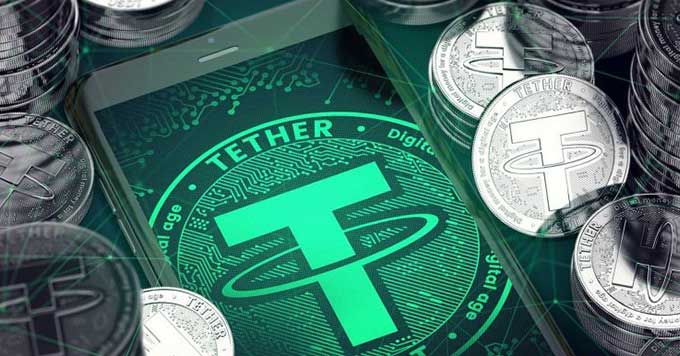Solving The “Rug Pull” Liquidity Problem On Uniswap DEX After The SUSHI Debacle
The cryptocurrency industry is gradually changing the traditional financial system allowing users to send transactions and make monetary payments across the globe seamlessly – bypassing geographical and governmental limitations. This has seen the crypto ecosystem evolve to create totally decentralized solutions in finance – decentralized finance (DeFi) apps – which provide a full financial system


The cryptocurrency industry is gradually changing the traditional financial system allowing users to send transactions and make monetary payments across the globe seamlessly – bypassing geographical and governmental limitations. This has seen the crypto ecosystem evolve to create totally decentralized solutions in finance – decentralized finance (DeFi) apps – which provide a full financial system including lending, borrowing, saving, etc. without any frictions.
However, these DeFi projects, especially if small, have found it difficult to get their tokens listed on centralized exchanges such as Binance and Coinbase. Moreover, to list these uprising projects, some of these centralized exchanges ask for exorbitant fees – unpractical for these small projects.
Understanding DEXes – Uniswap
This gave rise to decentralized exchanges, such as Uniswap, which provides a free listing of ERC-20 tokens. DEXes also differ from centralized exchanges in that users provide liquidity on the exchange in a method called pooling. Here, liquidity providers deposit cryptocurrencies in the liquidity pool and earn a share of the fees paid out in trading.
Uniswap DEX uses the Automated Market Maker to settle the trades between peers and the liquidity pool. The whole DeFi ecosystem is heavily dependent on liquidity hence a lack of it could raise problems for smooth trading on the platform.
Without liquidity, holders of the cryptocurrency will lack an incentive to keep the token as they will not be able to sell it on the market. On Uniswap, tokens prefer to create pools with 50% ETH and 50% of their selected token to ensure liquidity is maintained.
Problems with Liquidity
Over the course of 2020, a number of crypto projects have come up with the rising DeFi wave but as was the case in 2017, crypto scams have also increased. On DeFi, liquidity remains the key manipulator of the protocol and too much centralization of this liquidity (or too little liquidity) can be bad for the protocols.
SUSHI scam exit
Recently, the cryptocurrency world has been awash with stories of one of the nastiest ‘exit scam’ in decentralized finance (DeFi) recently, raising doubts on the whole ecosystem. SushiSwap (SUSHI), a competitor to top decentralized exchange – Uniswap, dropped over 80% in a week as the creator of the project sold all his profits for a $16 million payout in Ethereum.
This type of scam, known as a rug pull, sees the hacker set up liquidity in the pool only to pull it out after some time leaving unsuspecting holders with severe losses.
As such issues become prevalent across the DeFi system, projects such as Unicrypt, LID Protocol, and Vesta Protocol aim at solving these liquidity problems on Uniswap and similar DEXes in the future.
A solution to liquidity?
As explained before, a rug pull scam mainly arises some minutes, days, or a couple of weeks following the liquidity injection from the hacker. Such a huge sell-off of tokens leads to cascading collapse of projects, whereby the small action of withdrawing liquidity for a profit leads to an eventual collapse of the system.
So how do you solve this SUSHI-related problem? Liquidity protocols that govern pool liquidity are one of the fast-rising solutions to the rug pull scams and Uniswap related liquidity problems. One of the robustly-built projects, LID Protocol, or the Liquidity Dividends Protocol, offers a “Proof of Liquidity” token that solves these types of problems.
Proof of Liquidity
Proof of Liquidity makes it impossible for scammers to take out their liquidity as they are vested for a period of time to enhance development and innovation on the platform. This is ensured by locking the liquidity of tokens that are pre-launched on their platform. This means that project owners cannot pull the liquidity from their project in a way that cons investors out of their money, or tokens.
Staking proceeds
The platform also prevents liquidity problems on Uniswap DEX by providing staking related incentives on the governance of the launched protocol. Here, liquidity providers are incentivized to stake and vote on decisions on the protocol. Projects such as LID Protocol and TrustSwap provide incentives such as token payments and tax incentives to users who participate in protocol growth.
This incentivizes token holders to partake in actions that are beneficial to the community at large.
Parting Shot
The recent SUSHI exit scam debacle is opening up conversations on how to effectively solve and prevent rug pull scams on Uniswap, Justswap, and other DEXes. The growth of liquidity solution providers will help grow the decentralized finance system, providing users with a highly trusted and safe platform to carry out “frictionless financial transactions”.













![Despite Minor Sell-Offs, Bitcoin [BTC] Inches Closer to $14K, What’s Next?](../wp-content/uploads/2020/10/12120443/bitcoinprice.jpg)






